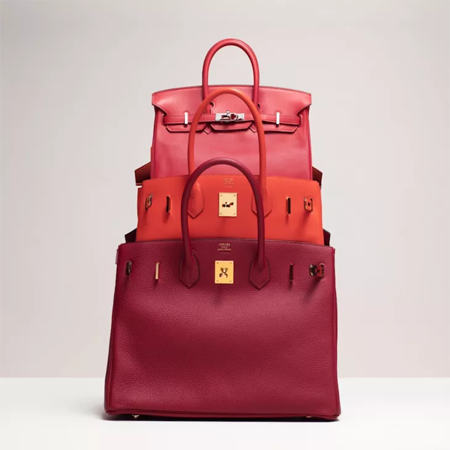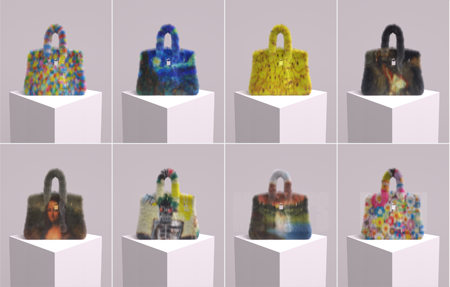First US court decision in MetaBirkin NFT case
Are the MetaBirkin NFTs works of art, or were they created for the sole purpose of illegally exploiting the renown of the iconic Birkin bag? The first decision of a US federal court in the case between fashion house Hermès and artist Mason Rothschild does not end the dispute, but provides some initial guidance for the protection of brands on virtual platforms.
On 18 May 2022 the United States District Court for the Southern District of New York (hereinafter the court) ruled in the dispute between the French fashion house Hermès International / Hermès of Paris Inc. (hereinafter Hermès) and Mason Rothschild, an American digital artist.

Birkin bags – image from the hermes.com website
The case is noteworthy as it involves several highly topical issues: the production of NFTs without the authorization of the owner of the intellectual property rights, the limits of unauthorised trademark use for artistic purposes and the protection of fashion brands in the metaverse.
Facts in the case
Hermès brought proceedings against Mason Rothschild after the artist created and sold, without Hermès’ consent, a number of NFTs of digital images reproducing the Birkin bag, an iconic model for which the French maison owns trademark and trade dress rights.
In the images connected to the disputed NFTs, Mason Rothschild had changed the material (synthetic fur), colours and decoration of the bags, but the Birkin model remained recognizable and the NFTs were marketed (see here) under the name “MetaBirkin ”at prices approaching those of authentic Hermès Birkin bags.
Hermès claimed infringement of its trademark rights, and documented cases in which both the media and consumers believed that the MetaBirkins were Hermès products.
The artist asked the court to declare Hermès’ appeal inadmissible, citing case law in which the protection of freedom of expression enshrined in the First amendment of the US Constitution had been extended to “expressive” works of art reproducing, in title or content, registered trademarks owned by third parties.
The court was essentially called to establish whether the MetaBirkin images should be considered commercial products without an expressive character, in which case it is sufficient to establish whether intellectual property rights have been infringed, or works of art with an expressive character (the NFTs merely a certification), in which case both Hermès’ intellectual property rights and the artist’s right to use the trademark must be taken into account.
The court’s decision
The court ruled, on the one hand, that the MetaBirkins are digital works of art possessing expressive character, therefore both First Amendment protection and the case law invoked by the artist apply.
On the other hand, the court rejected Mason Rothschild’s request to declare Hermès’ appeal inadmissible, on the ground that the appeal was based on enough evidence to show that use of the name MetaBirkin has no artistic relevance, and even if had any, it is misleading as to the origin or content of the works.

MetaBirkins created by Mason Rothschild – images from the looksrare.org web site
Although the decision does not put an end to the legal dispute, two points deserve attention.
1 – An NFT does not per se deprive the work of artistic character – For the court, an NFT is merely a tool certifying the authenticity of the image and tracing ownership transfer; in itself, use of NFTs in connection with digital images does not prove that the nature of the images is purely commercial to the point of excluding the protection provided for works of art.
2 – Wearable NFTs – In a footnote, the court suggested that the choice to consider Mason Rothschild’s works worthy of protection as works of art could have been different had the NFTs been linked to the digital image of a virtually wearable Birkin handbag.
The use of wearable NFTs is already widespread and rapidly expanding in online games and virtual platforms in general, so the court’s comment tends to confirm the need to extend trademark and design protection to cover use for NFTs and virtual platforms.
Extending protection appears most urgent for brands in the areas of fashion and other wearable products, as well as of any other products that can be used in gaming contexts and virtual platforms (see our recent article The metaverse, trademarks and intellectual property: opportunities and risks).
Related content
Flash news – NFTs and intellectual property, what you need to know to protect your trademarks and designs
Flash news – The metaverse, trademarks and intellectual property: opportunities and risks
